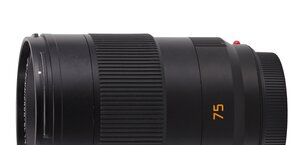Nikon Nikkor AF-S 24-120 mm f/4G ED VR
8. Vignetting

As you see there are no problems whatsoever. The measurements confirm it too. At 24 mm focal length and by f/4.0 the lens has just 14% of brightness loss in the frame corner (-0.43 EV) What’s interesting, on stopping down we don’t see almost any improvement. By f/5.6 the lens reaches 13% and it doesn’t change by f/8.0 either.
Please Support UsIf you enjoy our reviews and articles, and you want us to continue our work please, support our website by donating through PayPal. The funds are going to be used for paying our editorial team, renting servers, and equipping our testing studio; only that way we will be able to continue providing you interesting content for free. |
- - - - - - - - - - - - - - - - - - - - - - - - - - - - - - - - - - - - - - - - - - - - - - - -
At 40 mm focal length the situation is roughly the same. At the maximum relative aperture we get vignetting of 12% (-0.36 EV) which decreases to 11% by f/5.6 and to 10% by f/8.0. Almost identical values we notice at 70 mm. By f/4.0 the light fall-off in the frame corners also amounts to 12% (-0.38 EV) and by f/5.6 it decreases to 9%.
At the maximum focal length the vignetting level is the highest but still such a result is low. By f/4.0 we got the value of 17% (-0.55 EV) which decreases to only 7% on stopping down the lens by one stop.
Now let’s see how the lens performs on full frame.

Here we encounter much more problems. You can spot them at once looking at the difficult combination of the wide angle and the maximum relative aperture, where the brightness loss in the frame corners amounts to as much as 46% (-1.75 EV). Like in the D200 test, at the shortest focal length the vignetting on stopping down decreases slowly. By f/5.6 it is 35% and by f/8.0 it reaches the level of 29%. On further stopping down we don’t see much change. By f/11 the vignetting gets to 26% and by f/16 it is 24%.
The best situation can be observed near 40 mm. At the maximum relative aperture the vignetting amounts to 27% (-0.91 EV) and it decreases to 17% by f/5.6. Further stopping down helps very little because by f/8.0 the light fall-off in the frame corners is 14% and by f/11 – only 1% less.
At 70 mm focal length the problems start to increase again – at the maximum aperture the vignetting gets to 40% (-1.49 EV) and it decreases to 26% by f/5.6. By f/8.0 we have already the value of 20% and on stopping down by one stop – still 15%.
At the maximum focal length the situation ameliorates slightly. By f/4.0 the vignetting value measured by us amounted to 37% (-1.35 EV). On stopping down the aperture to f/5.6 the vignetting decreases to 19% and by f/8.0 it reaches the value of 12%. By f/11 this aberration becomes imperceptible because it is just 8%.
To sum up the vignetting on the small sensor won’t be bothersome at all. In the case of the tested lens it increases very slowly when you move away from the frame centre and only in the same corners this process accelerates; taking into account the fastness of this lens, its focal lengths range and the presence of a quite wide angle the results in this category can be certainly considered as decently good.
 |
 |
 |
 |






